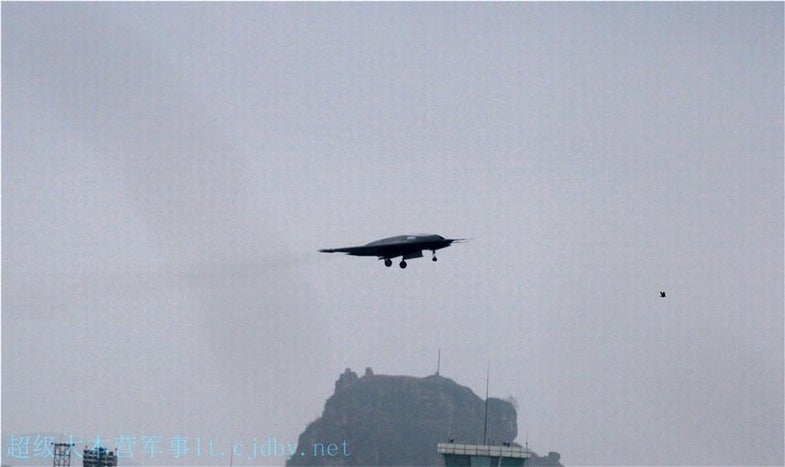Meet China’s Sharp Sword, a stealth drone that can likely carry 2 tons of bombs
It just won a technology prize, so China's pretty proud of it.

The Sharp Sword UAV (unmanned aerial vehicle), China’s stealthy attack drone, just won second place in the National Science and Technology Advancement Prizes. Considering the secrecy surrounding stealth drones to come out of China—there are relatively few photos of the Sharp Sword available, particularly as opposed to, say, the J-20 fighter—the Sharp Sword’s victory is pretty noteworthy. The drone, known as “Lijian” in Mandarin Chinese, is being paraded as a huge win for Chinese aviation technology. And it is.

Stealthy Sword
The Sharp Sword is the first non-NATO stealthy unmanned combat aerial vehicle (UCAV). Built by Aviation Industry Corporation of China, with much of the work done by the Hongdu Aviation Industry Group, the Sharp Sword first flew in November 2013. Looking a bit like a mini-B-2 flying wing bomber, the UCAV has two internal bomb bays and a likely payload of about 4,400 pounds. Its engine is a non-afterburning WS-13 turbofan engine, with serpentine inlet to hide the engine from enemy radars (the first Sharp Sword does not use a stealthy nozzle due to its technology demonstrator status). It has a length of about 33 feet, and a wingspan of about 46 feet.

The Future of Unmanned Warfare
Other similar foreign systems include the American X-47B, the British Taranis, and the French Neuron. Stealthy UCAVs have a number of advantages over their manned counterparts: they can fit the same internal payload onto a smaller airframe, and have much longer ranges, in addition to the typical advantages of unmanned aerial vehicles, like longer flight times.

The Coming Swarm
Reporting from the Chinese Internet suggests that a second, even stealthier Sharp Sword began flying last year (with a stealthy engine). If flight testing with the prototypes goes as well as the initial flight tests did with the first airframe, the Sharp Sword could enter service as early as 2019-2020.
Initially, it’s believed that the Sharp Sword will be used for reconnaissance in areas with dense air defense networks, as well as tailing foreign warships. As the Chinese develops a familiarity with the Sharp Sword, it could be used for combat operations as a “first through the door” weapon against highly defended, high-value targets, as well as an aerial tanker for other drones and carrier aircraft (akin to plans for the U.S. MQ-25). There is even the possibility of carrier version for China’s planned next generation of catapult equipped aircraft carriers.
Eventually, advances in distributed systems and artificial intelligence could help the Sharp Sword be a robotic wingman to manned aircraft in an unmanned/manned operational concept. It could even take on autonomous missions of its own.
You may also be interested in:
China’s New Fleet of Drones: Airshow Displays the Future of Warbots and Swarms
Soar Eagle! China’s Coolest Looking Drone Enters Production
Chinese Drones Make Key Breakthrough, Firing on Command by Satellite
Chinese Hypersonic Engine Wins Award, Reshapes Speed Race?
Divine Eagle, China’s Enormous Stealth Hunting Drone, Takes Shape